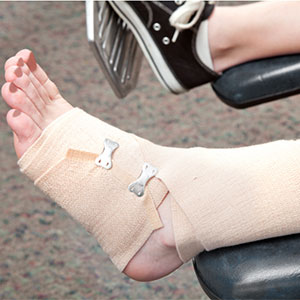Basketball is an exciting sport loved by millions around the world. However, it also comes with a certain risk of injuries, and one of the most common ones is an ankle sprain. Whether you're a professional player or a weekend warrior, understanding ankle sprains and how to prevent and treat them is essential. In this blog post, we'll delve into the causes of ankle sprains in basketball, explore effective prevention strategies, and discuss the best treatments for a speedy recovery.
- What causes ankle sprains in basketball?
- Rapid change of direction and sudden stops: The quick movements involved in basketball often put immense stress on the ankle joint, making it susceptible to sprains.
- Landing on another player's foot: In crowded game situations, accidentally landing on another player's foot is a common cause of ankle sprains.
- Weak ankles and lack of flexibility: Poor ankle strength and flexibility increase the risk of ankle sprains, as they fail to provide adequate support to the joint during intense movements.
- Preventing ankle sprains:
- Strengthening exercises: Regularly engaging in exercises that target the muscles surrounding the ankle can enhance stability and decrease the likelihood of sprains.
- Balance and proprioception training: Improving balance and proprioception through specific drills can enhance your body's ability to adjust to changes in position and prevent ankle rolls.
- Proper footwear and ankle support: Wearing high-top basketball shoes with good ankle support can help reduce the risk of sprains by stabilizing the joint during play.
- Treating ankle sprains:
- Rest, Ice, Compression, Elevation (RICE): This standard first-aid treatment should be applied immediately after the injury to reduce swelling and pain.
- Rehabilitation exercises: Once the initial swelling and pain subside, performing specific exercises can help regain strength, stability, and range of motion.
- Seeking professional care: If the ankle sprain is severe or does not improve with self-care measures, it is important to seek medical attention. A healthcare professional can assess the extent of the injury, provide appropriate treatment, and guide you through the recovery process.
Ankle sprains are a common occurrence in basketball, but with proper knowledge and preventive measures, their frequency can be reduced. By understanding the causes of ankle sprains, implementing preventative strategies, and seeking appropriate treatment when necessary, basketball players can minimize the risk of these injuries and continue to enjoy the game they love. Remember, taking care of your ankles is crucial for staying on top of your game and preventing long-term complications.

